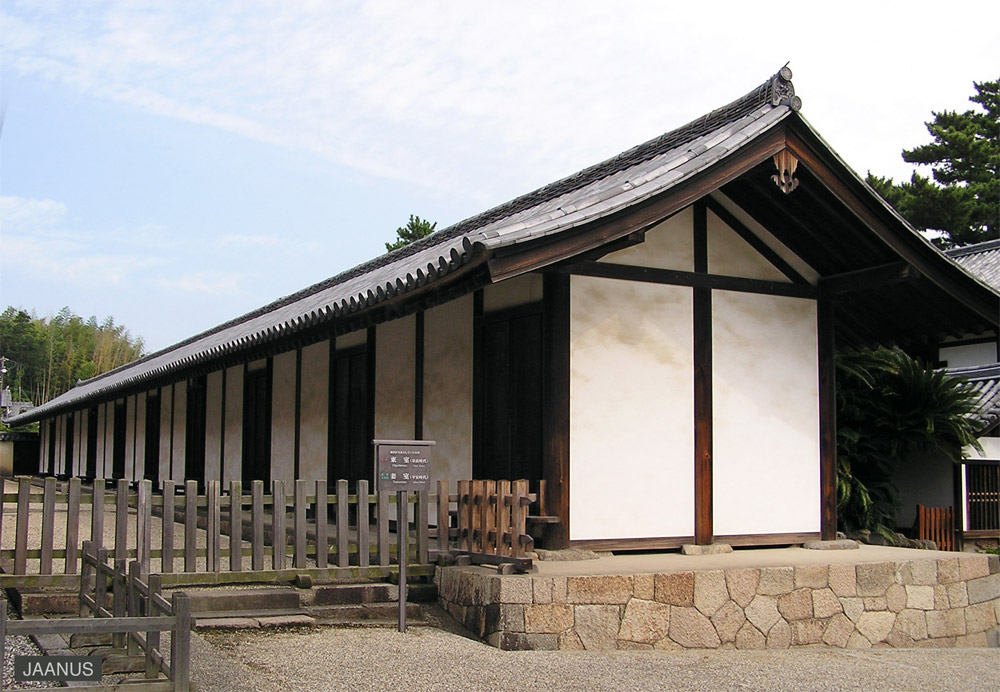|
||
 |
||

Houryuuji
Tsumamuro 法隆寺妻室 (Nara)
(C)2001 Japanese Architecture and Art Net Users System. No reproduction or republication without written permission.
掲載のテキスト・写真・イラストなど、全てのコンテンツの無断複製・転載を禁じます。
|
||||||
| Tsumamuro 妻室 | ||||||
| KEY WORD : architecture / buildings & structures | ||||||
| The dormitory for ordinary attendant monks at Houryuuji 法隆寺 in Nara. The present Tsumamuro was constructed in the Heian period, ca.1121, and was first repaired in 1246. Over the centuries, it underwent various repairs but in 1962 was reconstructed closely to its 1246 form. The dormitory is 27 bays long and 2 bays deep (51.43m ×3.96m). The gabled roof *kirizuma-zukuri 切妻造, is covered with tiles *hongawarabuki 本瓦葺. Diagonal braces *sasu 扠首, are visible in the gable pediments. There are no bracket complexes, kumimono 組物 (see *tokyou 斗きょう), but single eaves *hitonoki 一軒, and widely spaced rafters *mabaradaruki 疎垂木, accent the simplicity of construction. The interior is divided into 3-bay wide living spaces, each of which has a partition stretching from the east wall to the depth of 1-bay. Mud plaster walls with circular central pillars divide the 3×2 bay components from each other. There are no windows, but the 1-bay wall partially separates it from the 2-bay square room, and has doors on each side, suggesting the possibility that it served as a passageway. There is a lintel extending from the square post at the inner end of the partition to an inner pillar on the outside wall. Except for the interior square post all others posts are circular. There is no ceiling and the underside of the roof *keshou yaneura 化粧屋根裏, is visible. | ||||||
 Houryuuji
Tsumamuro 法隆寺妻室 (Nara)
|
||||||
| REFERENCES: | ||||||
| *Higashimuro 東室 | ||||||
| EXTERNAL LINKS: | ||||||
| NOTES: | ||||||
(C)2001 Japanese Architecture and Art Net Users System. No reproduction or republication without written permission. 掲載のテキスト・写真・イラストなど、全てのコンテンツの無断複製・転載を禁じます。 |
||||||